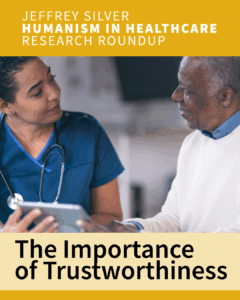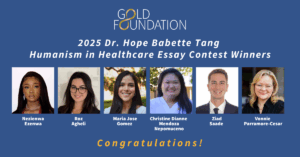 by Louise Aronson, MD
by Louise Aronson, MD
Earlier this year, I sat in on an innovative “Problem Based Learning” session at a medical school I was visiting. In a workshop room equipped with a communal table, white board, and video monitor to which one student’s computer could be attached so all could see what she scribed on behalf of the group, smart second-year students asked great questions about three clinical cases related to their major course that block. They discussed what was going on with the relevant organ systems, how certain drugs worked, and which symptoms had clinical import. The faculty member for the group – the best of the best, according to my host – chimed in infrequently with questions that subtly redirected or deepened the lines of inquiry.
To my surprise, in two hours of discussion of several cases only one student murmured a comment in response to the pathos of the patient’s situation. After just the first year of what would be at minimum a seven year process of medical training, it seemed these students already had learned to ignore the evident suffering described in the cases: a young boy’s fear as he gasped for breath during an asthma attack; a healthy middle age man’s sudden loss of limb and livelihood; and an older woman’s repeated vomiting as a result of food poisoning.
After the session, I commented on this total focus on pathophysiology and pharmacology to the faculty member when I learned that he also served as the course director. He said the curriculum was designed to encourage focus. It wasn’t possible to teach pathophysiology and clinical care simultaneously, and a blended approach was too confusing and overwhelming for the students. They needed fundamentals first, he explained, and the “patient stuff” was addressed elsewhere in the curriculum.
This faculty member, a clinician himself, said all this with evident thoughtfulness and commitment to his learners and to medicine. Although he seemed a bit miffed by my line of inquiry, I couldn’t tell whether his annoyance stemmed from frustration at being asked to add more to an already complex learning environment – a common source of frustration for all of us in medical education – or from perceived criticism of his beloved and clearly quite successful course.
Of course, he was right that we can’t teach everything all at once. And I, like him, have my biases about what matters most in medical training. But I wasn’t advocating for blending basic learning with clinical learning (though one can make a good case for that as well,) I was simply suggesting acknowledgement of both the patient’s suffering and the students’ responses to that suffering. Though there isn’t yet data on this particular part of the physician empathy puzzle, it seems entirely plausible that training students at the start of medical school to divorce pathophysiology from patients and clinical reasoning from compassion is one contributor to the creation of clinicians who either seem to – or perhaps even do – lack compassion or who sublimate their responses to suffering in unhealthy ways.
It’s worth noting that we know physician empathy leads to increased diagnostic accuracy, better patient outcomes, fewer errors, happier doctors and more satisfied patients, and that rates of physician burnout are at record highs.
I’d like to propose an alternate approach that wouldn’t take up much curricular real estate. For example, in the problem based learning session when discussing the case of the asthmatic boy, a student might remark, “The poor kid, he must be terrified.” This might be followed by a second or two of silence as each learner considered that reality. Then maybe another student, perhaps one who is already him or herself a parent, might add, “Yeah, and the parents too. They would feel so scared and helpless.”
At that point, the conversation could turn toward how to comfort both child and parents or even to the role of stress hormones in an asthma attack. Or not, if that isn’t consistent with the course’s learning objectives, in which case the group could simply move forward with the physiology and pharmacology lessons. The time lost would be a matter of seconds, yet the gains would be considerable.
Instead of encouraging the separation of learning and clinical competence from empathy, a curriculum in which students were encouraged to note suffering would send a very different message. Not: good doctors focus on disease and show no emotion but: it’s normal to feel upset when another human being can’t breathe and we at medical school X want you to be a person that notices and acknowledges distress in patients and families.
Such efforts won’t counterbalance all the messages of the hidden curriculum but it may be that if we prioritize the few seconds required to acknowledge suffering when we encounter it, whether in teaching cases and science-focused sessions or in hospitals and clinics, we might make progress toward training clinicians with greater ability to recognize and alleviate it in their patients. If that’s not a fundamental skill for physicians, I’m not sure what is.
 Louise Aronson, MD MFA, is a Gold Professor and an Associate Professor of Medicine in the Division of Geriatrics at the University of California, San Francisco where she directs the Northern California Geriatrics Education Center and UCSF Medical Humanities. She is the author of A History of the Present Illness (Bloomsbury 2013) which is a finalist for the PEN/Bingham award for “distinguished literary achievement and great promise” by a debut author.
Louise Aronson, MD MFA, is a Gold Professor and an Associate Professor of Medicine in the Division of Geriatrics at the University of California, San Francisco where she directs the Northern California Geriatrics Education Center and UCSF Medical Humanities. She is the author of A History of the Present Illness (Bloomsbury 2013) which is a finalist for the PEN/Bingham award for “distinguished literary achievement and great promise” by a debut author.


